NEWS TAG
brand
What is Raised Floor? What is the component of Raised Floor Systems and How is the Raised Floor Applications
Huiya technical floors facilitate adaptable and personalized spaces by creating a raised floor in offices, computer room, data center, server room, clean room and new spaces. We have the solution to upgrade older buildings into high-performance office spaces with faster construction, lower operating costs, and space planning flexibility with our raised access floor. We also have great anti-static raised flooring system for specialized areas where requires route mechanical services and cables, wiring, and electrical supply. Why are raised floors widely used in commercial and industrial buildings? Follow us to fully understand this technical floor!
What Is Raised Floor?
A raised floor also referred to as an access floor is usually constructed above a flat solid floor creating a void between both floors. The void is meant to provide a way for distributing construction materials and services including electricity supply to the entire parts of the building, water supply and drainage, heating, ventilation, and air conditioning services. Some people like to call it a false floor because it is not an actual floor. The raised floor system comprises of a number of pedestals that are mounted on the concrete floors and stabilized using adhesives and mechanical fixings. These pedestals are movable. Hence, the floor system can be as low as 3 inches above the concrete and as high as 48 inches.
History of Raised Floors
Raised floors emerged in the 1960s as people tried to find an ideal solution to environmental concerns within large computer rooms. There was a need for sufficient air-conditioning systems to provide enough air circulation in the mainframe computer rooms. The raised floors used simple steel plates with simple structural designs supported by the flat floors. The constructional designs have evolved over time with better technologies being incorporated for durable construction designs. Concrete materials are been used for proper ventilation systems. The improved technologies also allow flexibility features in building services with removal floor panels for quick maintenance. This thus makes it make repairs or any improvements in the building services without disrupting the furniture or the partition walls.

Raised Access Floor System Definition
Raised floor systems (also known as a raised floor, technical floor, raised flooring, or computer floor). which can be used for raised floors on uneven ground or concrete floors. the raised floor provides hidden space for mechanical equipment or electrical plumbing.
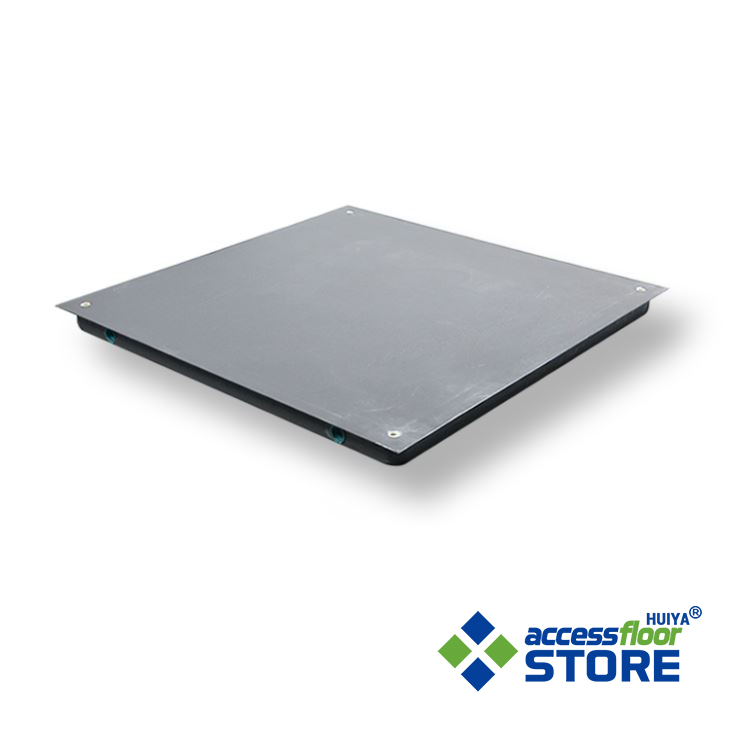
Why Do You Need Anti-Static Raised Floor?
The use of anti-static flooring can effectively control the generation of ESD. in the technical field and industrial settings, electrostatic discharge causes many problems. For example, ESD causes degradation of sensitive electronic components. it cannot be detected during routine quality control. Static electricity can cause dust collection and reduce lines in sensitive electronic equipment. Also, the generation of ESD static electricity is also harmful to human safety. The use of the ESD raised floor can be successfully dissipated static electricity to the ground.
Raised Floor Structure & Components
There are 6 major components of raised floor systems which include the raised floor panel, perforated panel, the base, head, pedestal assembly, and the stringer.
1) Raised Floor Panel
In order to meet the needs of different environments, Huiya has a variety of materials for elevated floor panels, but in fact, we can divide them into the following three types according to their functions:
A: Common Raised Floor Tiles
The raised floor panel forms the flat surface of the access floor. It is usually about 24’’ × 24’’ in size and it is constructed using steel materials. Concrete materials are used to fill the panel making it durable and flexible in case some improvements need to be done on the building services installed in the panel. Aluminum can also be used for reinforcement purposes. These floor panels are usually availed in different designs and materials and therefore you can choose the best materials that suit your needs and conforms to your budget as well.
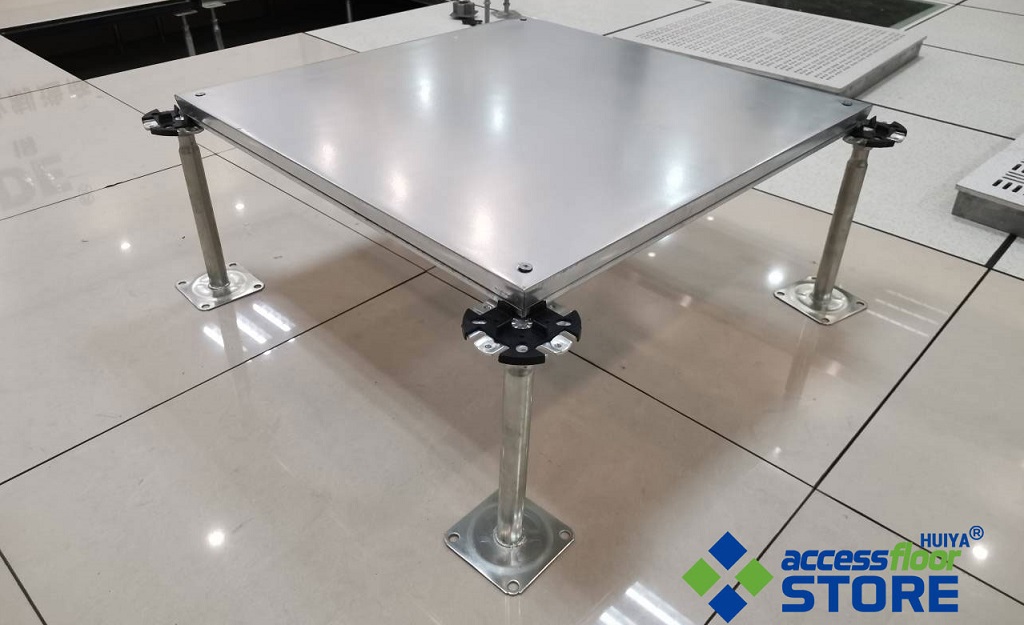
B: Raised Floor Wiring Module Panel
The wiring module is specially produced to support power outlets and data ports. it installed with common raised floor systems. This wiring module belongs to a special series of raised floors.
C: Perforated Raised Floor Panels For Airflow
The raised floor with venting holes for airflow is mainly used for air supply in the bottom space. Users can place perorated raised floors in specific areas for airflow control. The raised floor air flow rating can be 20%-80%.
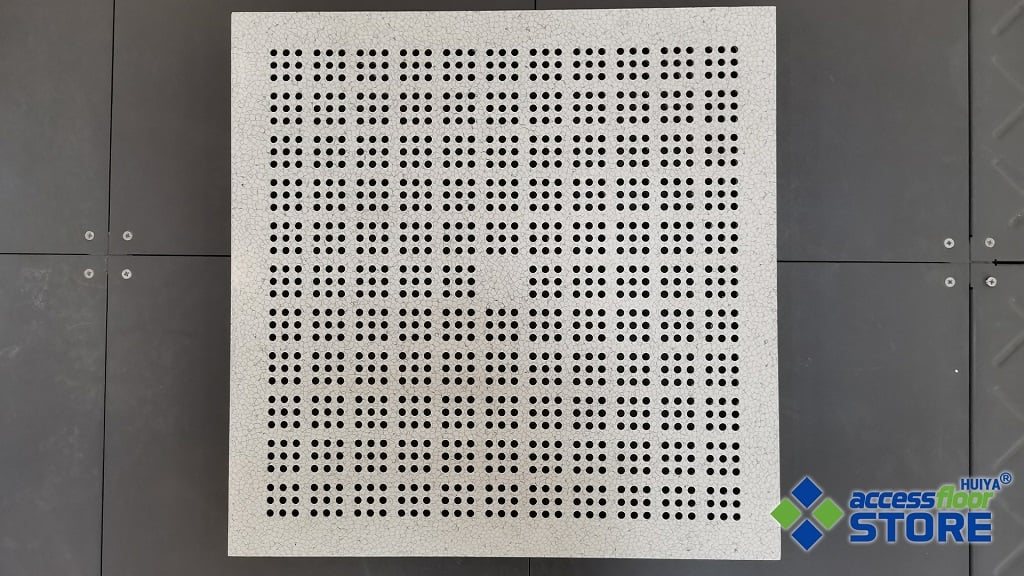
2) Raised Floor Pedestal
The pedestal part of the raised floor provides structural support for the raised floor. They are commonly referred to stands, legs, jacks, or stanchions. The pedestal connects the floor base and the head allowing enough space for any building materials that need to be installed beneath the floor. Different floor pedestals may vary depending on the floor system installed in the building. The pedestals are flexible for any adjustments providing a vertical support structure for the raised floor.
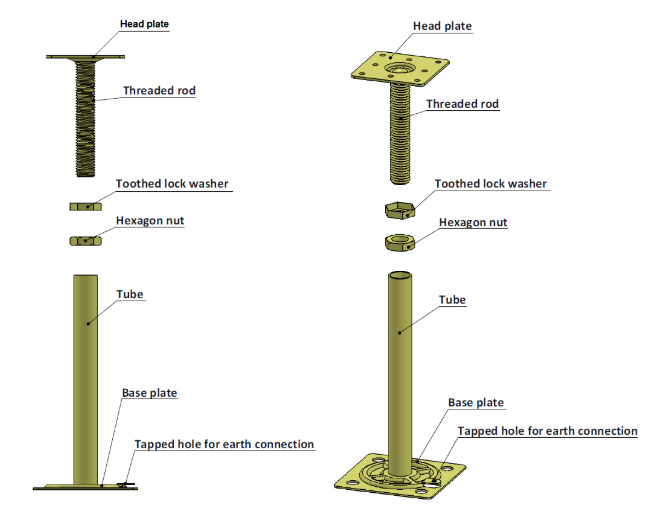
3) Raised Floor Stringer
The raised access floor stringers are also essential parts in the raised floor construction as they aid in joining the pedestals forming a framework for a strong floor panel. They are also referred to as connecting rods or grids and aids in providing a lateral stability especially for deep voids in raised floor constructions. The stringers can be made of aluminum channels or square tube depending on the raised floor design. They can be fastened at both ends with a screw to firmly connect to the pedestals. Basically the stringer provides additional support for the raised flooring.
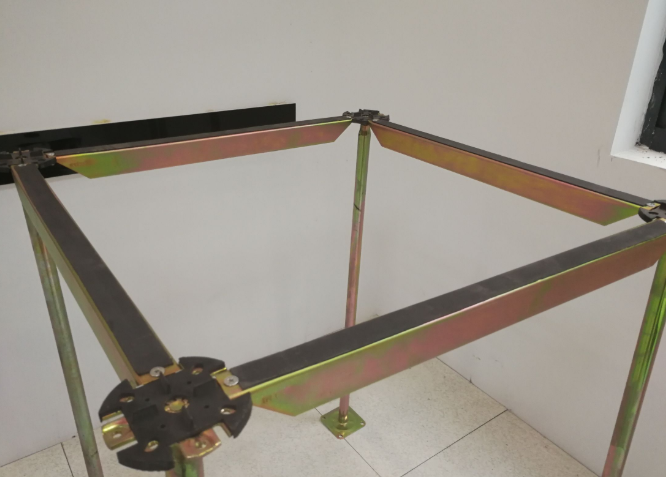
Besides knowing the various components that make up the flooring system, you need to get a clear understanding of the entire flooring process as well.
Advantages of Raised Floor System
Raised floors can really revolutionize the construction industry. Embracing them means a lot in terms of costs. Here are the main benefits of using raised floor for your project.
Flexible to changes and easy to fix - The raised floor is ideal in case a tile breaks or you need to fix some problems altering the functioning of the air condition or cables installed in the panel. You do not need to replace all tiles to fix the problems as only a single tile need to be fixed as compared to dealing with a regular floor tile.
Easy access - The raised floors makes it easy to access serves installed in the panels without disrupting other parts of the floor area. You can also label the different areas where the saves are installed for easy access.
A better look - A raised floor gives a good look to the building with cables and all types of wiring running through these panels. The floor space will thus be organized in an orderly manner giving a good look for the entire building.
Raised Floor System Application
Raised floors are widely used in modern office buildings. such as command centers, information technology data centers, and computer rooms. where mechanical services and cabling, wiring and power supplies need to be routed.
Office Raised Floor
Access floors make it possible for office occupants to enjoy clean air and favorable room temperatures. Such floors are known for proper cold air distribution. This significantly saves companies the costs of energy and purchasing and maintaining air conditioners and fans. The floors can allow underground wiring to take place and you can add an unlimited number of equipment.
Data Center Raised Floor
Technology spaces such as data centers have a heavy need for raised floor systems but needs vary with the data center. If data center servers get heated, floors need to have perforated tiles where cold air passes through making the places cooler. Where hot air passes, maintenance tiles can be installed in cold air passages to make data centers warmer. Most data centers need access floors since they need to do a lot of cabling which is quite impossible on regular concrete floors. In addition, this saves on costs and time of installation. The floors make cabling much easier leaving data center floors very be neat and rooms with enough lighting.
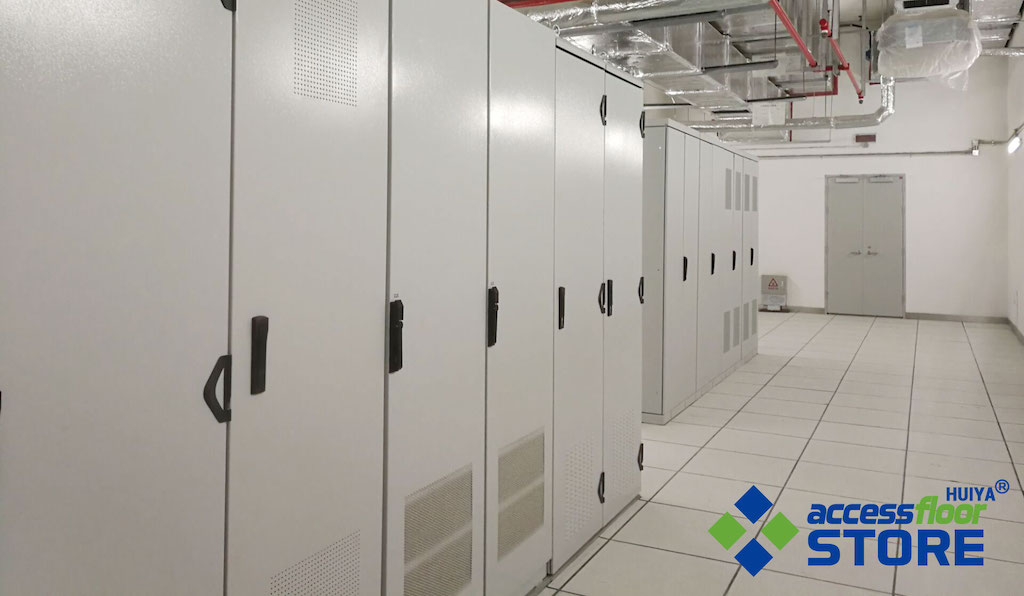
Residential Raised Floor
Raised floor systems can be applicable at home in the living rooms since there are also equipment and occupants need comfort. The need for access floors in your home may match that of your office since there may be a home office where you like to work, or study. You might also need to install more electronic equipment in your home. More cabling is necessary in this case and is better done underground than on the walls.
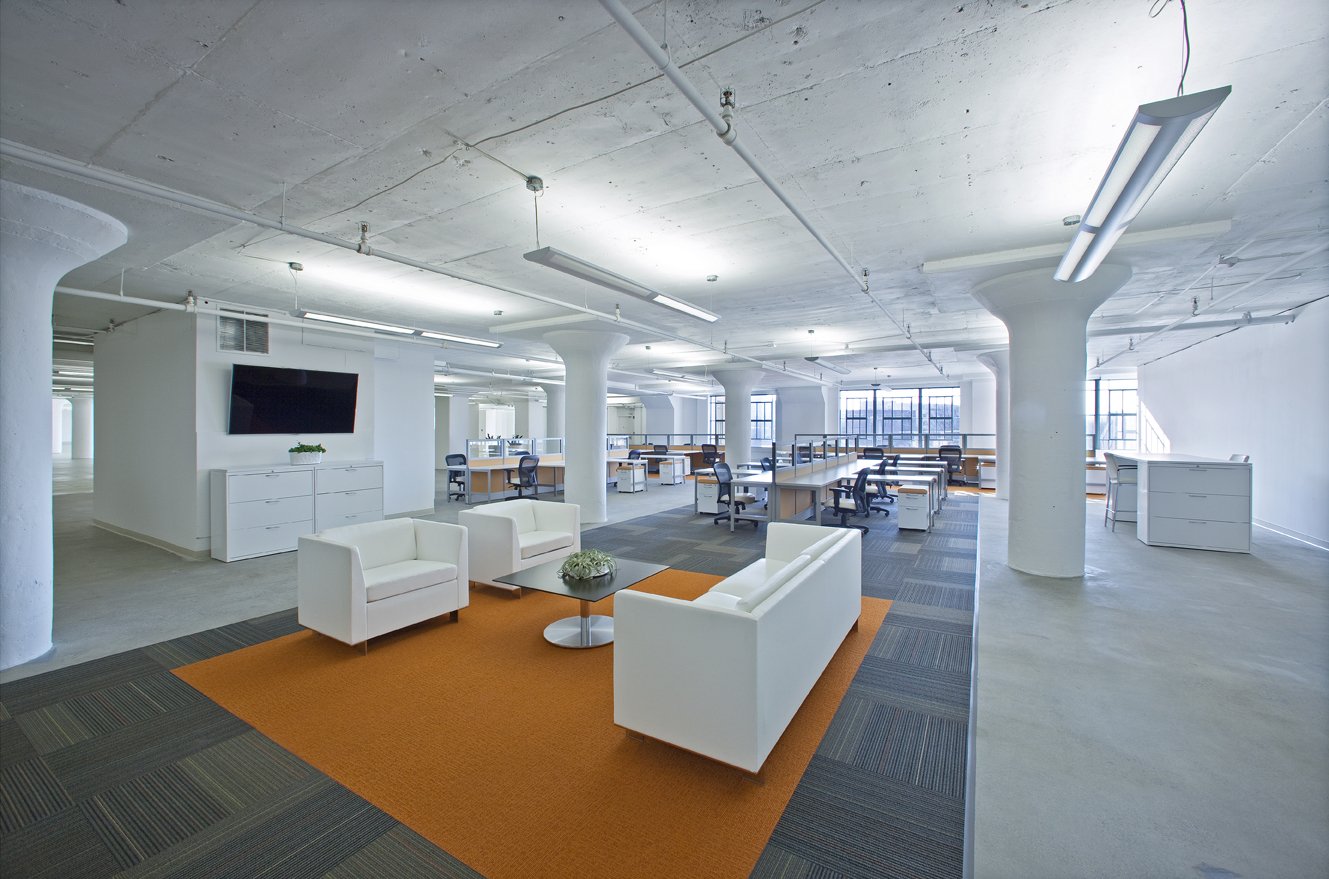
How To Install Raised Floor System?
If you need quality raised floor installations then you need to ensure that you get the right tools and equipment. There are quite a number of choices to consider when it comes to deciding on the most suitable tools for the raised floor installations. Therefore you may need an expert to guide you through the best construction tools to choose. The right tools may however depend on a range of factors including the flooring application type, the cooling system, wiring needs to be installed in the floor panel and the weight capabilities of the tools used in the flooring process. You need to acquire quality tools and equipment that can support the entire flooring system.
The flooring process may vary depending on the area where the panels are being installed. It is therefore important to get sufficient knowledge on how to effectively install the raised floors in the various parts of the building. A fully experienced contractor may help you work out everything effectively and also provide appropriate solution when a challenge occurs during the installation process. Then you can follow the steps to install raised floor:
1. Check the room prior to installation
It is important to first assess whether the access floor system you want to install is compatible with the room dimensions and configurations. You could check how much variation there is between sub floor level and the elevator, door sills, and concrete ledges with the help of a laser that you will to mark the areas that will receive the floor. If based on your assessment, the floor cannot be installed, some corrections may have to be made.
2. Position the pedestals
The points you have marked will serve as the starting points or traces of the grid. Use them to place the columns. Use adhesives to stabilize them. A spatula or brush can be used to apply adhesives.
3. Position the cross-section stringers
Cross-section stringers are rods you will use to join the pedestals you have just positioned. Joining is done using screws or bolts. This will help in supporting the panels. Before placing the panels, the stringers should be screwed onto the pedestals.
4. Use gaskets on the stringers
Gaskets are meant to reinforce the function of the stringers. The most preferable material for them is PVC since it is rigid.
5. Levelling the floor
The raised floor is too levelled such that it is parallel to the initial floor. If the structure is not even, the floor panels will reflect that unevenness. This might make future installation of equipment very problematic.
6. Panel placing
Panels should be placed correctly using panel lifters. You will know it has happened if the pieces fit perfectly into the assembled structure. Remember to make sure the stringers are screwed firmly on the pedestals before placing the panels.
7. Completion of the floor system
The floor is complete if every step has been carefully followed.
About HUIYA Raised Floor System (ACCESSFLOORSTORE)
ACCESSFLOORSTORE(HUIYA) is a professional raised floor manufacturer in Changzhou China. we made the all-steel raised floor, wood core raised floor and calcium sulfate raised floor and aluminum raised floor at cheap price. we welcome more companies to be our raised floor distributors. give us an e-mail and ask for a price.
